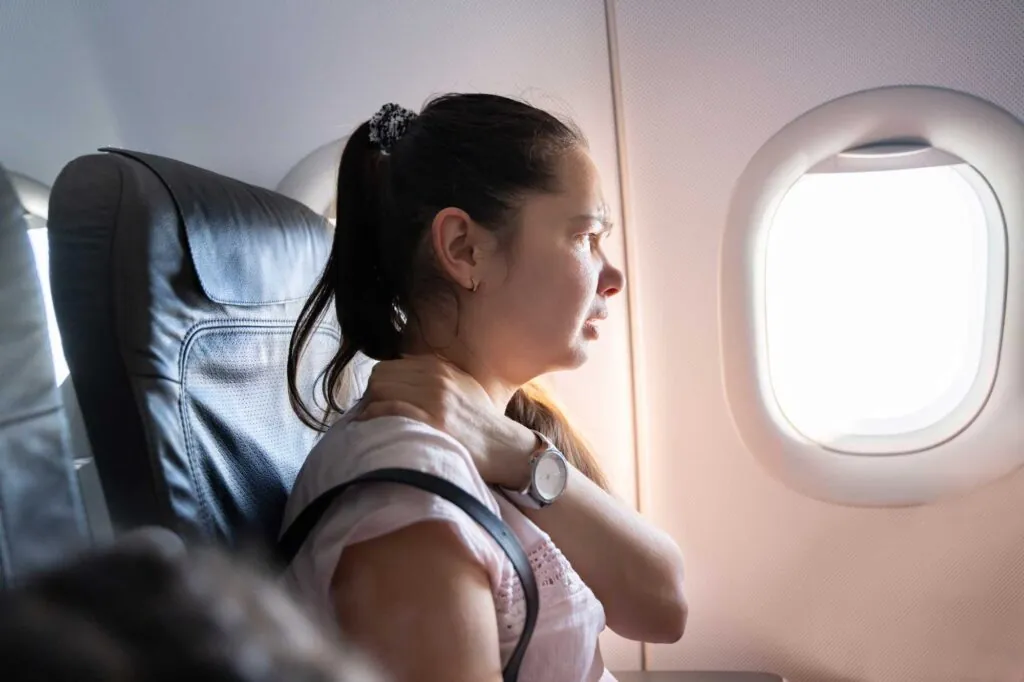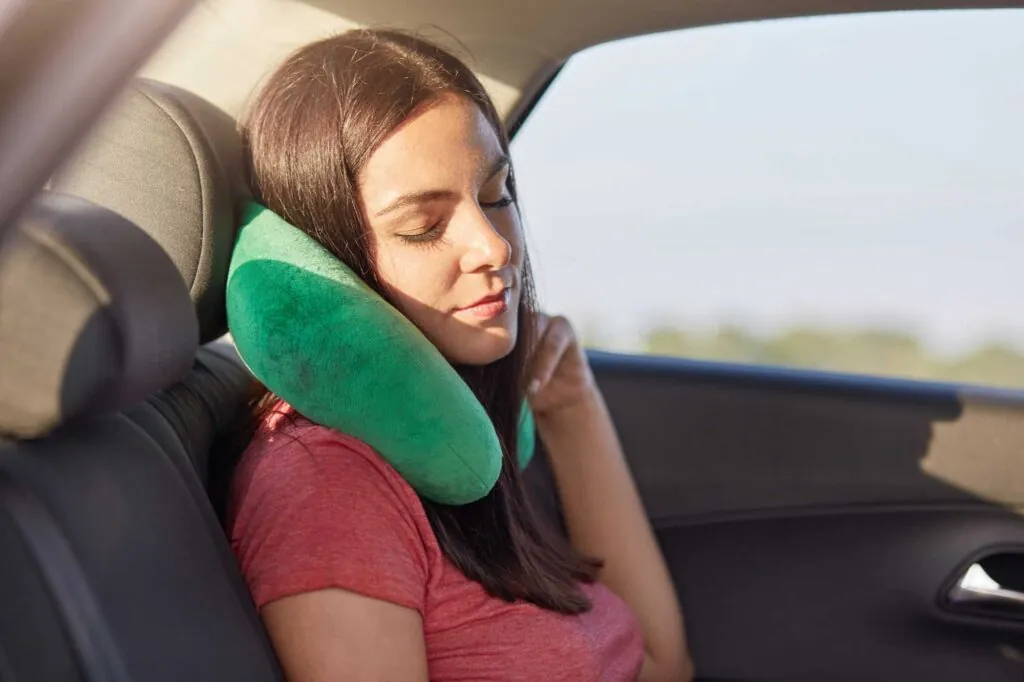Most travelers know the feeling of getting out of their car or plane stiff and sore after hours of sitting. According to a Tylenol-commissioned OnePoll survey, about one in three Americans experience pain while traveling. Neck and back stiffness are among the most common complaints, even in people without prior injuries. The good news is that most of this discomfort isn’t from anything serious, it’s simply a result of staying still for too long.
Common Causes of Neck Pain While Traveling

People tend to assume the problem is “bad posture,” but the real issue is being stuck in one position for too long. When you’re seated for hours, behind the wheel or on a plane, neck and shoulder muscles begin to stiffen.
Other common contributors include:
- Poor sleep: When you don’t get enough quality sleep the night before, your body becomes more sensitive to pain.
- Stress: Higher stress levels make the nervous system more sensitive, meaning even normal muscle tension can feel more uncomfortable. Stress also causes people to unconsciously tense their shoulders and neck.
- Dehydration: Dry airplane air and not drinking enough water can make muscles and joints feel stiff.
How to Prepare for Travel to Avoid Neck Pain:
- Stay active in the days leading up to travel. Regular movement keeps your tissues more tolerant to long periods of stillness.
- Mobilize key areas. Gentle neck rotations, shoulder rolls, and thoracic spine extensions over a foam roller can loosen things up.
- Plan rest breaks. Getting your 8-hour drive done without stopping is tempting, but your neck will thank you for adding 1-2 stops to get out and stretch.
- Set up sleep support. Invest in a travel pillow that keeps your neck in a comfortable position.

Tips To Avoid Neck Pain During Travel
Once the trip starts, your main goal is to avoid staying still for hours and finding positions of comfort.
- Change positions frequently. Every 30 to 60 minutes, shift your posture, stretch your arms, or roll your shoulders. Even small movements count.
- Take breaks. On a road trip, stop for a few minutes of gentle walking or neck movement at each rest stop. On a plane, stand or lean back to extend your spine.
- Support your head. If you tend to nap in transit, use a pillow or rolled-up hoodie to support your neck rather than letting it hang.
Post-Travel Recovery for Neck Pain
Once you reach your destination, give your neck and shoulders a chance to reset.
- Active motion. Move your neck slowly through comfortable ranges—looking side to side, up and down, and rolling your shoulders.
- Apply heat or take a warm shower. This improves blood flow and pain perception.
- Resume normal activity. Avoid overprotecting your neck; movement helps it recover faster than rest alone.
- Stretch and massage. Focus on the upper back and shoulder blades, which often contribute to neck tension.
Post-Travel Exercises To Help Ease Neck Pain
If you’re dealing with mild soreness after a long trip, these simple at-home techniques can help:
- Thoracic extension: Place a foam roller around shoulder-blade level while lying down and gently extend over it. Repeat for 25 reps.
- Banded pull-aparts: Hold a resistance band at shoulder height with your arms straight in front of you. Pull the band apart by squeezing your shoulder blades together. Perform 2–3 sets of 15–20 reps to engage the postural muscles that support your neck and upper back.
- Upper trap stretch: Tilt your head to one side and lightly pull with your hand until you feel a gentle stretch. Hold for 30 seconds, repeat both sides.
When to See a Physical Therapist for Travel-Related Neck Pain

If your neck pain is recurring or more severe than simple stiffness, a physical therapist can identify why it keeps happening. Sometimes the issue isn’t travel itself but underlying issues like weak stabilizers, limited thoracic mobility, or other musculoskeletal problems. Physical therapy can address these through targeted strengthening, mobility work, and manual therapy to restore function. Even a short course of treatment can reduce flare-ups before your next trip.
Preventing Neck Pain on Long Flights and Road Trips
Traveling doesn’t have to leave you sore. Most neck pain from long drives or flights comes down to lack of movement, poor support, and tension that builds over time. By preparing ahead, changing positions often, and keeping your tissues mobile afterward, you can make even the longest trips pain-free.
Find a PT Clinic Near You!
If your neck consistently flares up when you travel, a physical therapist can help pinpoint the cause and build a plan that keeps you moving comfortably. Click here to find a PT near you.


